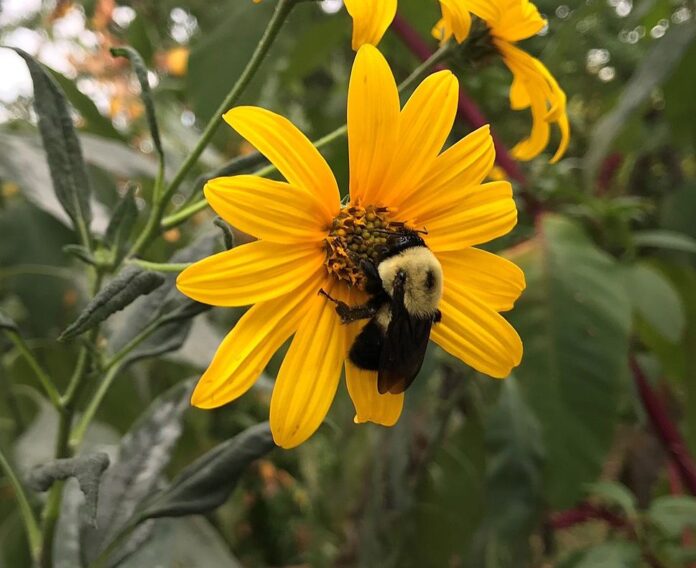Outline of the Article
- Introduction
- Brief overview of bees and their habits.
- Mention of the intriguing concept of bees sleeping in flowers.
- Understanding Bee Sleep Patterns
- Explanation of sleep in insects.
- Comparison of bee sleep with other animals.
- The Role of Flowers in Bee Sleep
- Discussion on the relationship between bees and flowers.
- How flowers provide shelter and protection for bees during sleep.
- How Bees Sleep in Flowers
- Description of the process.
- Factors that influence bee choice of sleeping flowers.
- Benefits of Sleeping in Flowers for Bees
- Discussion on the advantages for bees.
- Importance of flower sleep for bee survival.
- Impact of Human Activities on Bee Sleep
- Mention of threats to bee habitats.
- How human actions affect bee sleep patterns.
- Conservation Efforts and Bee Sleep
- Highlighting initiatives to protect bee habitats.
- Importance of preserving natural areas for bees to sleep in flowers.
- Conclusion
- Recap of key points.
- Emphasis on the significance of understanding and conserving bee habitats.
Bees Sleep in Flowers
Introduction
Bees Sleep in Flowers, often regarded as nature’s busy workers, engage in various fascinating behaviors to ensure their survival and the prosperity of their colonies. Among these behaviors lies a lesser-known phenomenon that intrigues scientists and nature enthusiasts alike: bees sleeping in flowers.
Understanding Bee Sleep Patterns
Sleep is a vital biological function observed across the animal kingdom, including insects. While the sleep patterns of bees differ from those of mammals and birds, they do exhibit periods of rest and inactivity. Unlike humans, bees do not experience rapid eye movement (REM) sleep, but they do have sleep-like states characterized by reduced sensory responsiveness and decreased motor activity.
The Role of Flowers in Bee Sleep
Flowers play a crucial role in the lives of bees, serving not only as a source of nectar and pollen but also as makeshift shelters during periods of rest. As diurnal creatures, bees require safe and secure locations to spend the night away from predators and adverse weather conditions. Flowers provide an ideal refuge, offering protection and insulation from the elements.
How Bees Sleep in Flowers
The process of bees sleeping in flowers is a marvel of nature’s ingenuity. As dusk approaches, bees return to their hives or nests, but some individuals, particularly worker bees, may opt to spend the night outdoors. These bees select flowers with suitable characteristics, such as sturdy petals and spacious interiors, to serve as their sleeping quarters. Once inside a flower, a bee settles down, tucks its legs beneath its body, and enters a state of rest.
Benefits of Sleeping in Flowers for Bees
Sleeping in flowers offers several advantages for bees. Firstly, it provides protection against predators and adverse weather conditions, ensuring their safety throughout the night. Additionally, flowers emit subtle scents and produce warmth, creating a conducive environment for rest and relaxation. Furthermore, sleeping in flowers allows bees to conserve energy and prepare for another day of foraging and pollination activities.
Impact of Human Activities on Bee Sleep
Despite the inherent resilience of bees sleep in flowers, human activities pose significant threats to their habitats and sleep patterns. Urbanization, agricultural expansion, pesticide use, and climate change have all contributed to the degradation of natural environments, limiting the availability of suitable sleeping sites for bees. As a result, bee populations face increased stress and are more vulnerable to declines.
Conservation Efforts and Bee Sleep
Recognizing the importance of preserving bee habitats, conservationists and environmental organizations have initiated various efforts to protect and restore natural areas. These initiatives include the creation of pollinator-friendly gardens, the implementation of sustainable farming practices, and the establishment of protected areas for wildlife. By safeguarding bee habitats, we can ensure that these vital pollinators have access to suitable sleeping sites in flowers.
Conclusion
The phenomenon of bees sleep in flowers sheds light on the intricate relationship between pollinators and their environment. By understanding and appreciating this behavior, we gain insight into the complex lives of bees and the importance of preserving their habitats. As stewards of the planet, it is our responsibility to take action to protect bee populations and ensure their continued well-being.
Unique FAQs
- Do all bees sleep in flowers?
- While not all bees sleep in flowers, some species, particularly solitary and solitary-nesting bees, exhibit this behavior.
- How do bees choose which flowers to sleep in?
- Bees select flowers based on various factors, including size, shape, scent, and location. They prefer flowers with sturdy petals and ample space for shelter.
- Are there any risks associated with sleeping in flowers?
- Sleeping in flowers exposes bees to potential dangers such as predation and extreme weather events. However, bees have evolved mechanisms to mitigate these risks.
- Do bees dream while they sleep?
- The concept of dreaming is still poorly understood in animals, including bees. While bees do exhibit sleep-like states, whether they experience dreams remains a subject of speculation among scientists.
- How can individuals contribute to bee conservation efforts?
- Individuals can support bee conservation by planting pollinator-friendly gardens, avoiding the use of pesticides, and advocating for the protection of natural habitats.



